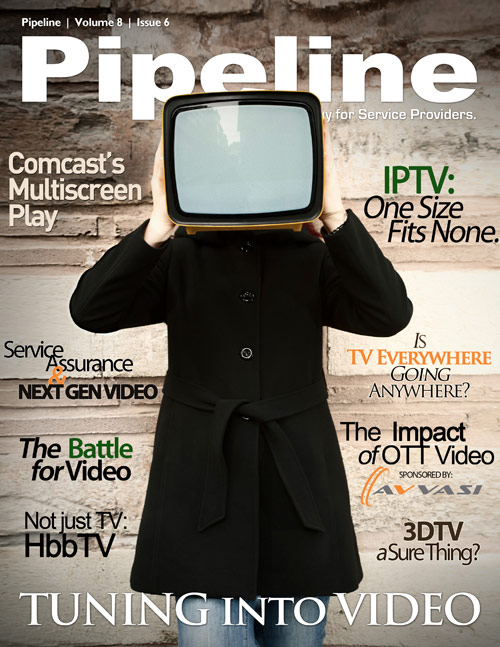By: Mate Prgin

It could be argued that Over-the-Top (OTT) video is having the single biggest effect on Content Service Providers (CSPs) since the advent of text messaging. While taking advantage of the easy-to-stream videos companies such as Netflix, Hulu and YouTube are providing, smartphone, tablet and PDA owners are congesting networks and, in the process, unwittingly having a detrimental impact on their own stream and video Quality of Experience (QoE).
The rise in OTT video presents network providers with a tantalizing monetization opportunity via advertising, paid-for content and download-only special offers—if they can tackle the issue of Quality of Experience (QoE) head-on. QoE is the perceived level of quality at which customers view their streaming applications, which can be compromised by the sheer volume of people downloading OTT video over the networks. However, service providers can deploy OTT video analytics solutions that measure perceived subscriber QoE in real time and provide actionable business intelligence that enables service providers to improve customer experience, troubleshoot issues, and upgrade their networks accordingly.


A recent study of media consumption trends reveals that the number of mobile video consumers is growing by 41%, and the number of viewing hours is growing by 20%1. This represents a significant opportunity for monetization but, because of the currently fragmented value chain, there is a substantial gap between mobile video viewer penetration (10%) and the amount spent on advertising in that market (0.5%)2. While mobile viewers account for 10% of all video viewers, they represent 50% of data traffic3. Service providers are already struggling to meet the demand mobile viewers place on their networks. If network providers can resolve the detrimental effects such intense levels of streaming have on their networks, they could be in a position to develop new and compelling services that meet evolving subscriber expectations (view any content, anywhere, any time, on any device). This remains a hypothetical scenario as long as CSPs fall short of delivering and meeting customer QoE expectations and in the absence of a framework.
It isn’t just smartphone owners that are at the forefront of the mobile video revolution. 50% of tablet owners are not only viewing feature-length movies on their device, but TV shows as well. Nearly 60% of smartphone/tablet owners will also be viewing OTT video at home, demonstrating yet another monetization opportunity for savvy network providers.
Video traffic today accounts for 50% of all mobile traffic and it's on a trajectory to reach the 70% mark in a few years.4 YouTube alone accounts for 13% of all global mobile data bandwidth.5 Consumer frustration grows as a result of constrained bandwidth, stalling playback and poor video fidelity. Acknowledging that nearly three quarters of mobile video consumers have experienced video QoE issues, it's no wonder 63% are willing to pay for value-added services to improve their viewing experience.6








